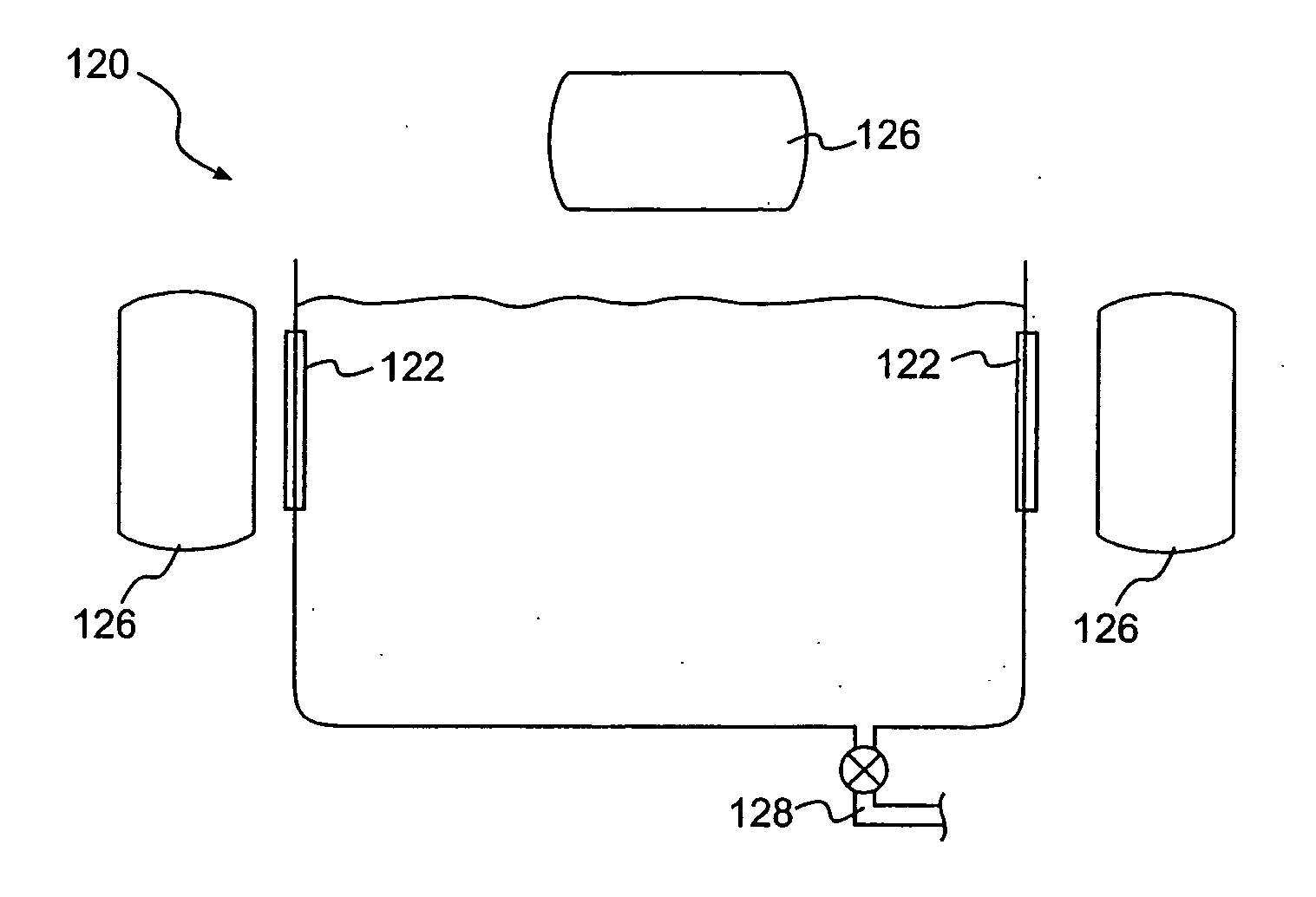High frequency energy application to petroleum feed processing
a technology of petroleum feed and high frequency energy, applied in the direction of hydrocarbon oil treatment, hydrocarbon preparation, hydrocarbon oil cracking process, etc., can solve the problems of catalyst deactivation, catalytic material loss, catalytic material deterioration due to abrasion, etc., and achieve the effect of reducing the formation of coke on the catalys
- Summary
- Abstract
- Description
- Claims
- Application Information
AI Technical Summary
Benefits of technology
Problems solved by technology
Method used
Image
Examples
Embodiment Construction
[0026] All oil processes that use catalysts are complicated by catalyst deactivation. The deactivation is typically due to poisoning the catalyst with sulfur and due to coke precipitation on the catalyst. Further, the precipitation of heavy metals such as nickel, vanadium, and iron results in catalyst deactivation. The accumulation of coke catalyst requires regeneration of the catalyst. In cyclic operating plants, the catalyst must be periodically regenerated and in plants with a moving catalyst layer, the catalyst must be continuously regenerated. Some procedures require the plant to shut down so the catalyst may be unloaded from the reactor followed by catalyst regeneration. Some systems have a cyclic system where the catalyst is transferred from the reactor to a regeneration column followed by the transfer of the catalyst to the reactor without shutting down the system. The regeneration column operates at high temperatures and requires additional power and cost to operate. When t...
PUM
| Property | Measurement | Unit |
|---|---|---|
| frequency | aaaaa | aaaaa |
| frequency | aaaaa | aaaaa |
| pressure | aaaaa | aaaaa |
Abstract
Description
Claims
Application Information
 Login to View More
Login to View More - R&D
- Intellectual Property
- Life Sciences
- Materials
- Tech Scout
- Unparalleled Data Quality
- Higher Quality Content
- 60% Fewer Hallucinations
Browse by: Latest US Patents, China's latest patents, Technical Efficacy Thesaurus, Application Domain, Technology Topic, Popular Technical Reports.
© 2025 PatSnap. All rights reserved.Legal|Privacy policy|Modern Slavery Act Transparency Statement|Sitemap|About US| Contact US: help@patsnap.com



